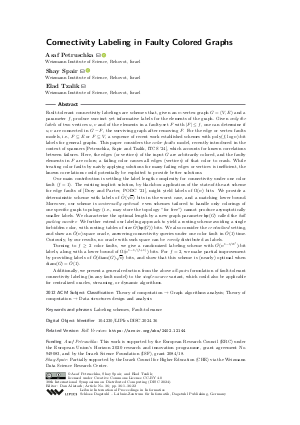@InProceedings{petruschka_et_al:LIPIcs.DISC.2024.36,
author = {Petruschka, Asaf and Spair, Shay and Tzalik, Elad},
title = {{Connectivity Labeling in Faulty Colored Graphs}},
booktitle = {38th International Symposium on Distributed Computing (DISC 2024)},
pages = {36:1--36:22},
series = {Leibniz International Proceedings in Informatics (LIPIcs)},
ISBN = {978-3-95977-352-2},
ISSN = {1868-8969},
year = {2024},
volume = {319},
editor = {Alistarh, Dan},
publisher = {Schloss Dagstuhl -- Leibniz-Zentrum f{\"u}r Informatik},
address = {Dagstuhl, Germany},
URL = {https://drops.dagstuhl.de/entities/document/10.4230/LIPIcs.DISC.2024.36},
URN = {urn:nbn:de:0030-drops-212622},
doi = {10.4230/LIPIcs.DISC.2024.36},
annote = {Keywords: Labeling schemes, Fault-tolerance}
}

 Creative Commons Attribution 4.0 International license
Creative Commons Attribution 4.0 International license

